
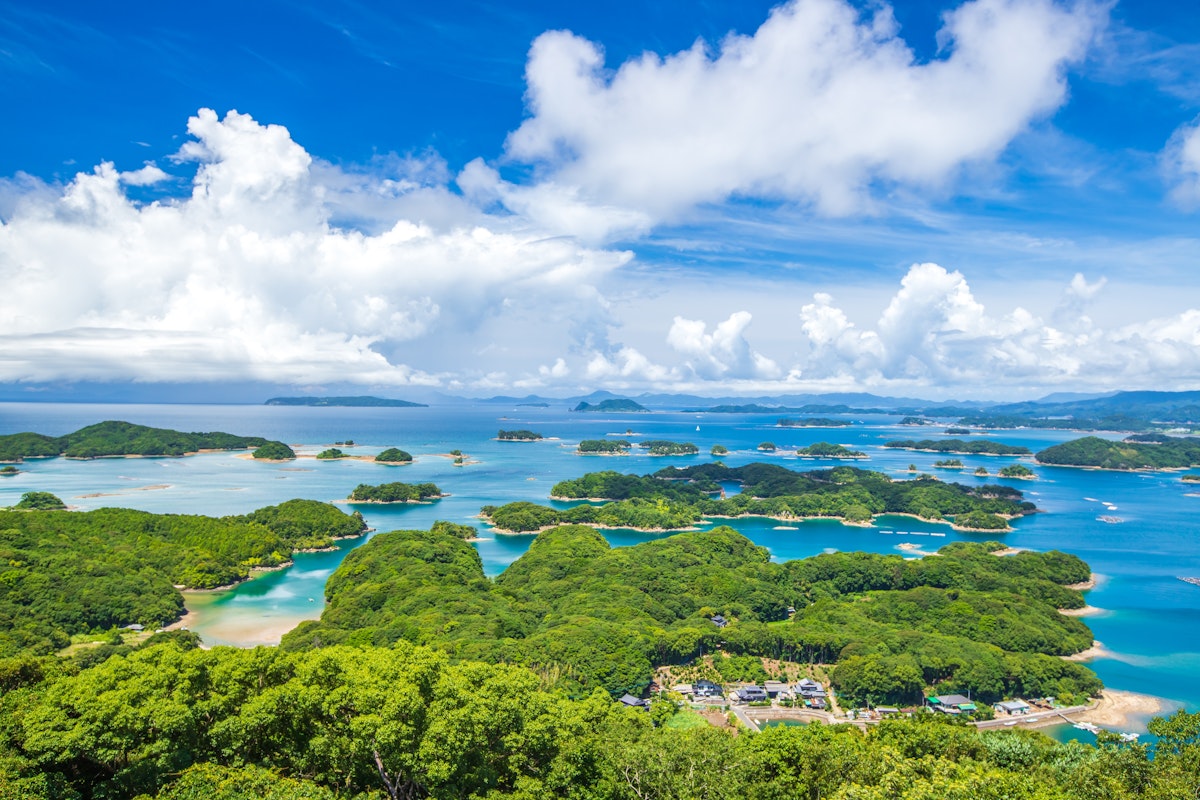
นางาซากิเมืองที่อุดมไปด้วยประวัติศาสตร์และวัฒนธรรม เป็นการผสมผสานระหว่างอดีตและปัจจุบัน สําหรับนักเดินทางครั้งแรก จุดหมายปลายทางแห่งนี้จะให้ข้อมูลเชิงลึกเกี่ยวกับช่วงเวลาที่หล่อหลอมญี่ปุ่นและโลกทั้งใบ
ตั้งแต่อนุสรณ์สถานที่เศร้าของระเบิดปรมาณูไปจนถึงเทศกาลที่มีชีวิตชีวาและทิวทัศน์ที่งดงาม นางาซากิเป็นเมืองที่มีความแตกต่างที่สร้างความประทับใจไม่รู้ลืม ค้นพบว่าทําไมนางาซากิจึงควรเป็นอันดับต้น ๆ ของการเดินทางของคุณด้วยประสบการณ์ที่จําเป็นเหล่านี้
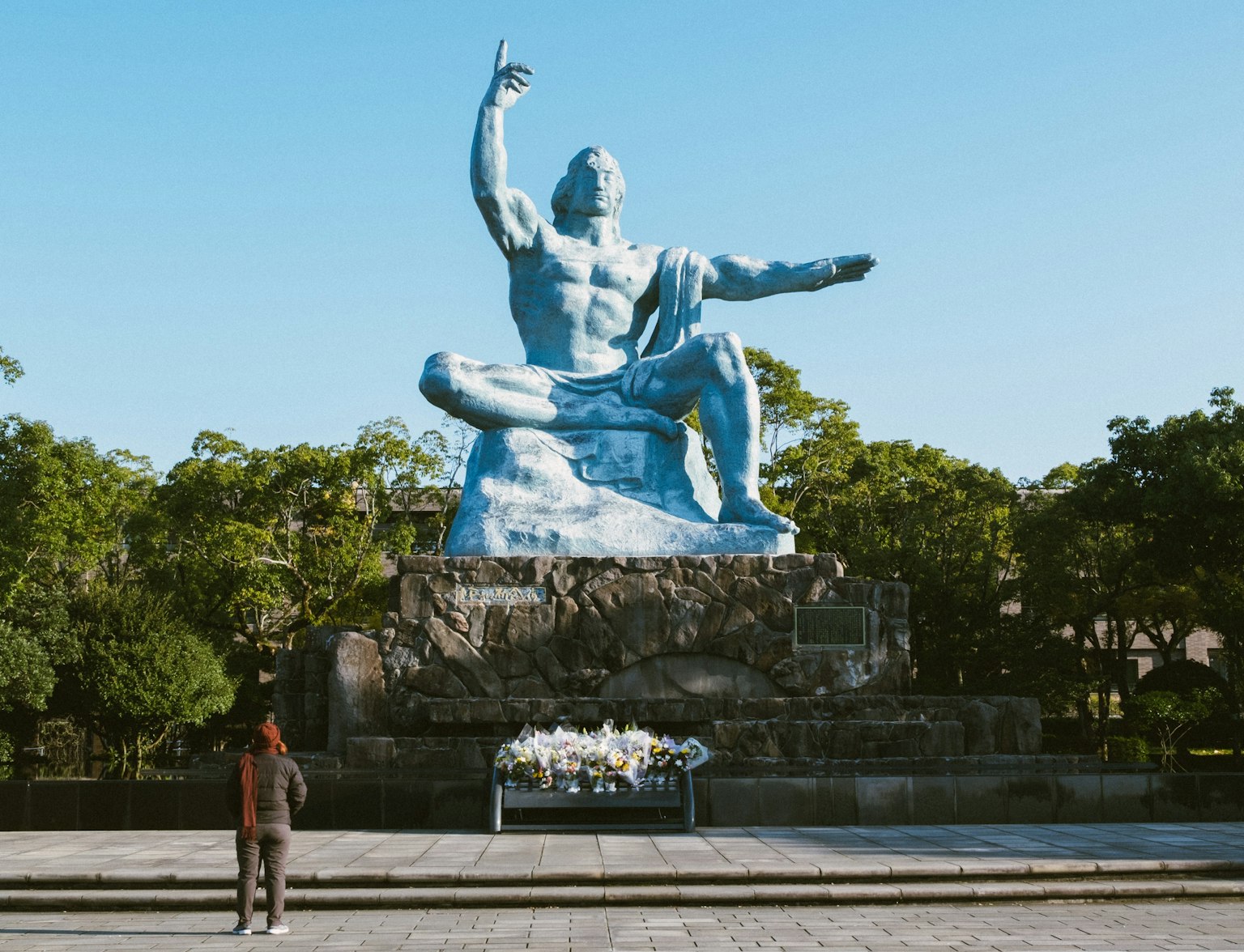
ค้นพบประวัติศาสตร์อันน่าทึ่งและความยืดหยุ่นของนางาซากิในทัวร์เสียงด้วยตนเองที่น่าจดจํา

พื้นที่ พิพิธภัณฑ์ระเบิดปรมาณูนางาซากิ เป็นเครื่องเตือนใจที่สะเทือนใจถึงการทิ้งระเบิดปรมาณูที่เกิดขึ้นเมื่อวันที่ 9 สิงหาคม พ.ศ. 1945 พิพิธภัณฑ์แห่งนี้จัดแสดงรายละเอียดเกี่ยวกับเหตุการณ์ที่นําไปสู่การทิ้งระเบิด ผลกระทบของการระเบิด และผลที่ตามมา
ผู้เข้าชมสามารถสํารวจสิ่งประดิษฐ์ ภาพถ่าย และเรื่องราวส่วนตัวที่เน้นย้ําถึงความยืดหยุ่นของผู้คนและการฟื้นฟูของเมือง

สวนสันติภาพนางาซากิเป็นตัวอย่างที่ดีของการอุทิศตนเพื่อสันติภาพโลกของเมืองด้วยรูปปั้นสันติภาพอันเป็นสัญลักษณ์และสภาพแวดล้อมที่เงียบสงบสําหรับการไตร่ตรอง สวนสาธารณะตั้งอยู่ใกล้กับจุดศูนย์กลางของการระเบิดปรมาณู ใกล้กับ Hypocenter Park และเป็นเจ้าภาพจัดพิธีรําลึกสันติภาพประจําปี
การเยี่ยมชมนางาซากิจะไม่สมบูรณ์หากไม่ได้ใช้เวลาที่สวนสันติภาพ ซึ่งเป็นสัญลักษณ์ของความหวังแห่งสันติภาพของเมือง สวนสาธารณะที่ประดับประดาด้วยต้นการบูรและอนุสรณ์สถานสําหรับผู้ที่ตกเป็นเหยื่อระเบิดปรมาณู เป็นพื้นที่สําหรับการไตร่ตรองและรําลึกถึง
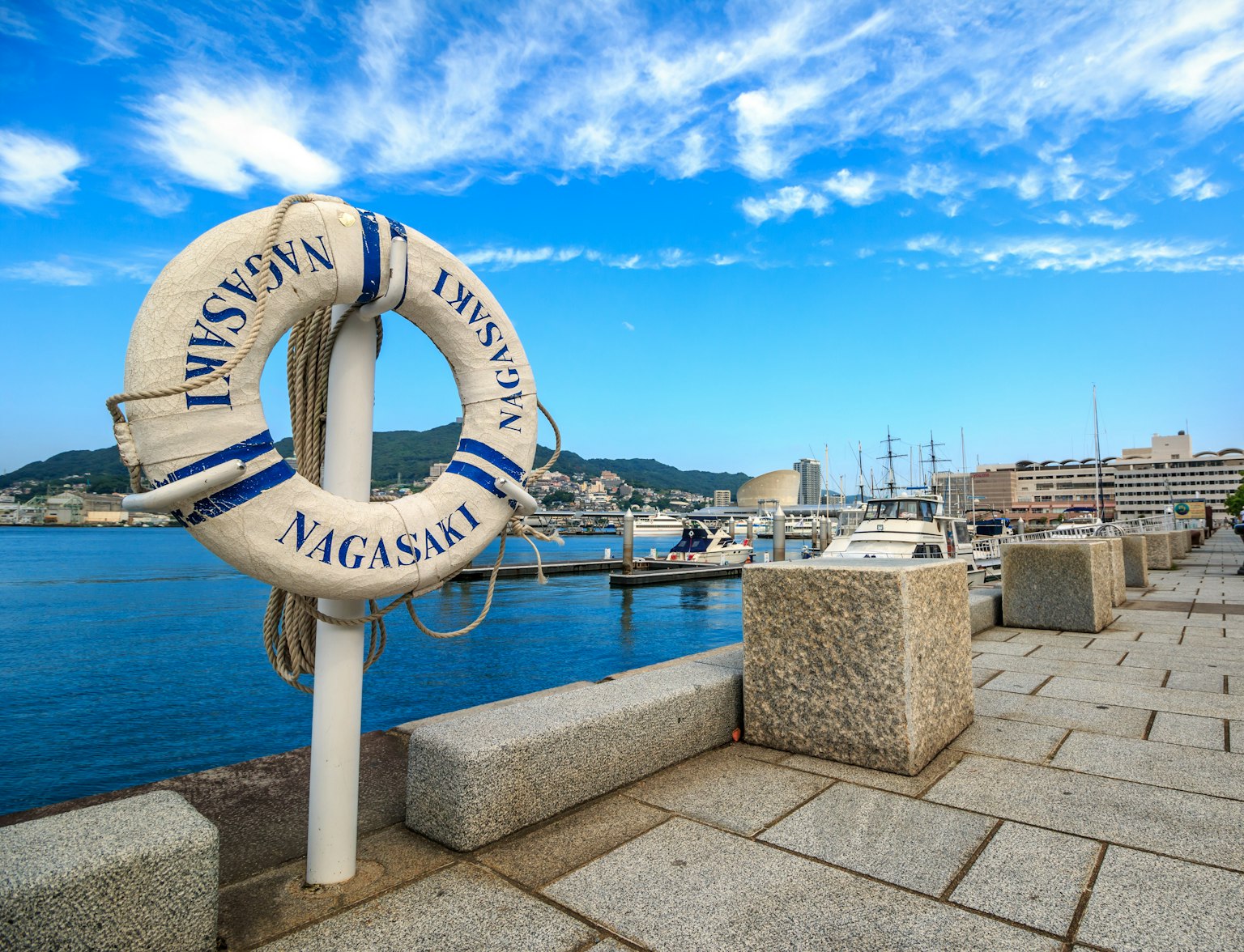
ค้นพบใจกลางนางาซากิที่มีชีวิตชีวาในทัวร์เดินเท้าส่วนตัว 3 ชั่วโมง
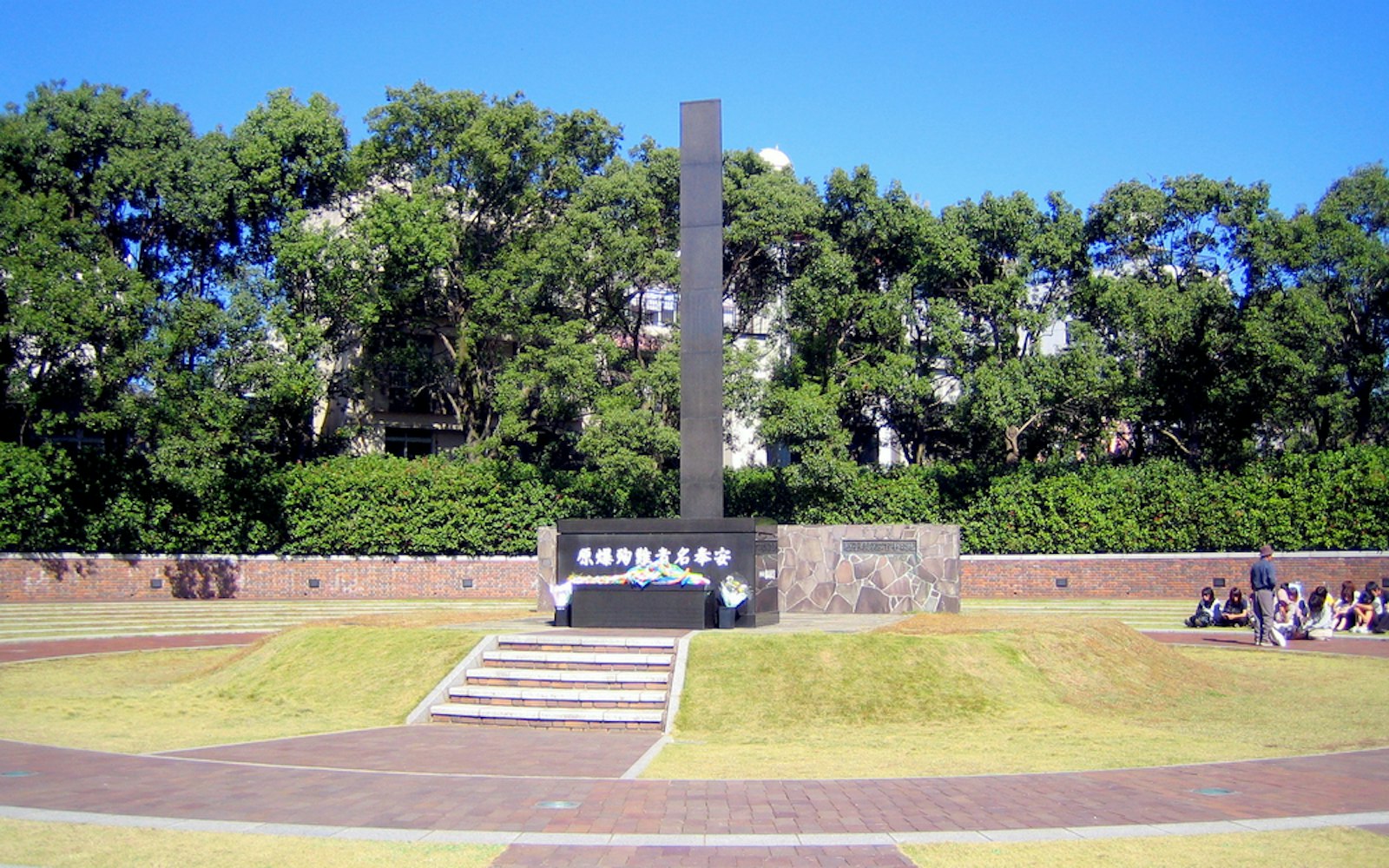
อุทยานระเบิดปรมาณูในนางาซากิเป็นจุดที่ระเบิดปรมาณูระเบิดเมื่อวันที่ 9 สิงหาคม พ.ศ. 2488 เสาหินสีดําที่โดดเด่นแสดงถึงจุดศูนย์กลาง ล้อมรอบด้วยสวนสาธารณะอันเงียบสงบที่เต็มไปด้วยต้นซากุระและอนุสรณ์สถาน
สถานที่แห่งนี้เป็นส่วนหนึ่งของคอมเพล็กซ์ขนาดใหญ่ซึ่งรวมถึงอุทยานสันติภาพนางาซากิและพิพิธภัณฑ์ระเบิดปรมาณูนางาซากิ ซึ่งให้ผู้เข้าชมได้เห็นภาพสะท้อนที่สะเทือนใจเกี่ยวกับผลกระทบร้ายแรงของระเบิดปรมาณูและเส้นทางสู่การฟื้นฟูของเมือง ปัจจุบันอุทยานแห่งนี้เป็นสัญลักษณ์ของความหวังและความยืดหยุ่น โดยมีต้นไม้เขียวขจีที่สดใสตัดกับการทําลายล้างในอดีต เป็นเครื่องพิสูจน์ถึงความสามารถของธรรมชาติในการฟื้นฟูและความมุ่งมั่นของเมืองต่อสันติภาพ

สวนโกลเวอร์เป็นพิพิธภัณฑ์กลางแจ้งที่จัดแสดงคฤหาสน์สไตล์ตะวันตกจากยุคเมจิ แหล่งมรดกโลกขององค์การยูเนสโกแห่งนี้มีทิวทัศน์อันงดงามของอ่าวนางาซากิ
นําเสนอข้อมูลเชิงลึกเกี่ยวกับชีวิตของชาวต่างชาติ โดยเฉพาะพ่อค้าชาวสกอตแลนด์ผู้ทรงอิทธิพล Thomas Glover นักท่องเที่ยวสามารถสํารวจอาคารประวัติศาสตร์ที่ได้รับการอนุรักษ์ไว้อย่างสวยงามและภูมิทัศน์ที่สวยงาม
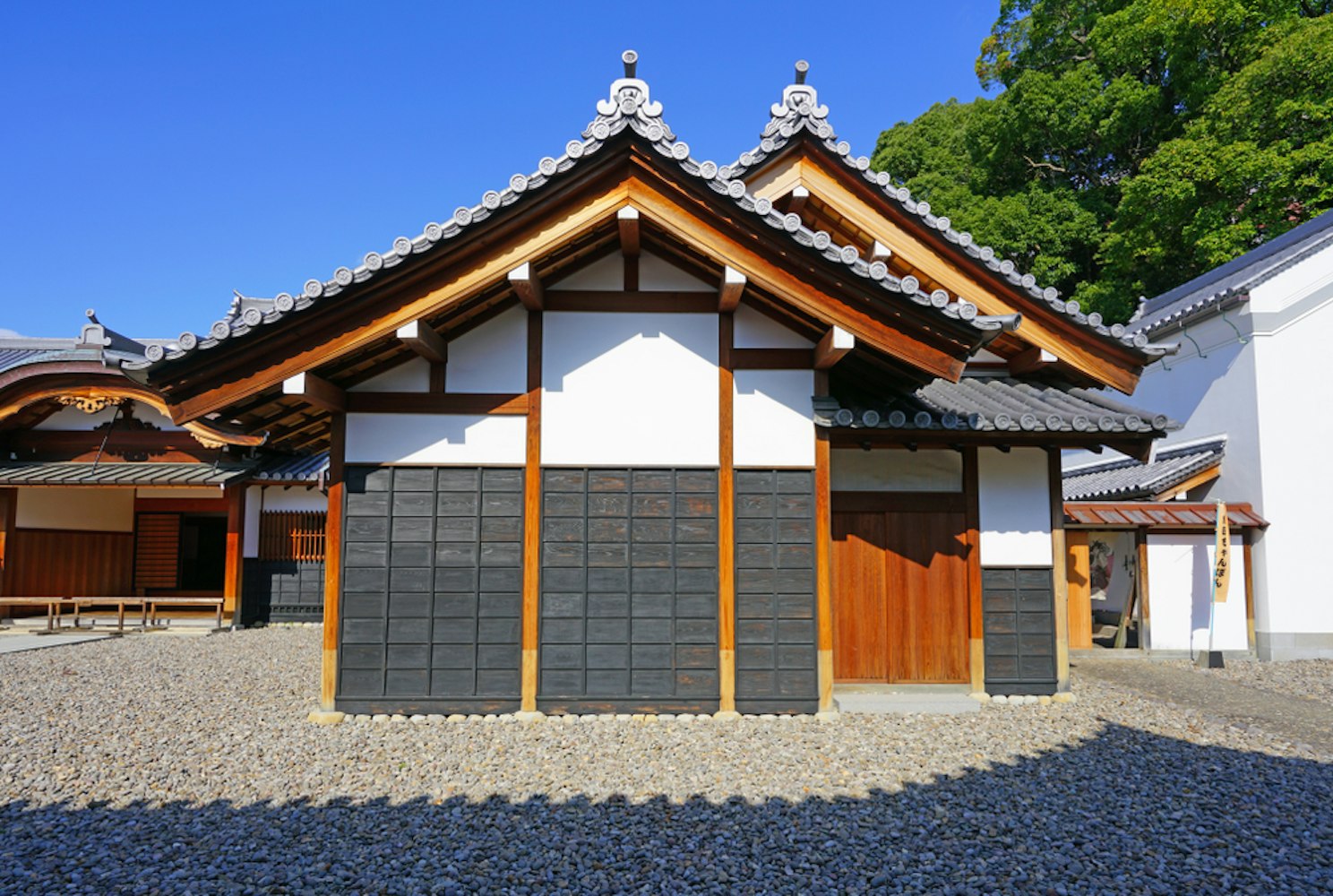
พื้นที่ พิพิธภัณฑ์ประวัติศาสตร์และวัฒนธรรมนางาซากิ เจาะลึกประวัติศาสตร์อันยาวนานของเมืองและจัดแสดงสิ่งประดิษฐ์จากสมัยเอโดะเมื่อนางาซากิเป็นประตูเดียวของญี่ปุ่นสู่โลกภายนอก นิทรรศการรวมถึงสิ่งของจากด่านการค้าของดัตช์และพ่อค้าชาวจีน ซึ่งสะท้อนให้เห็นถึงอิทธิพลระหว่างประเทศที่สําคัญของเมือง
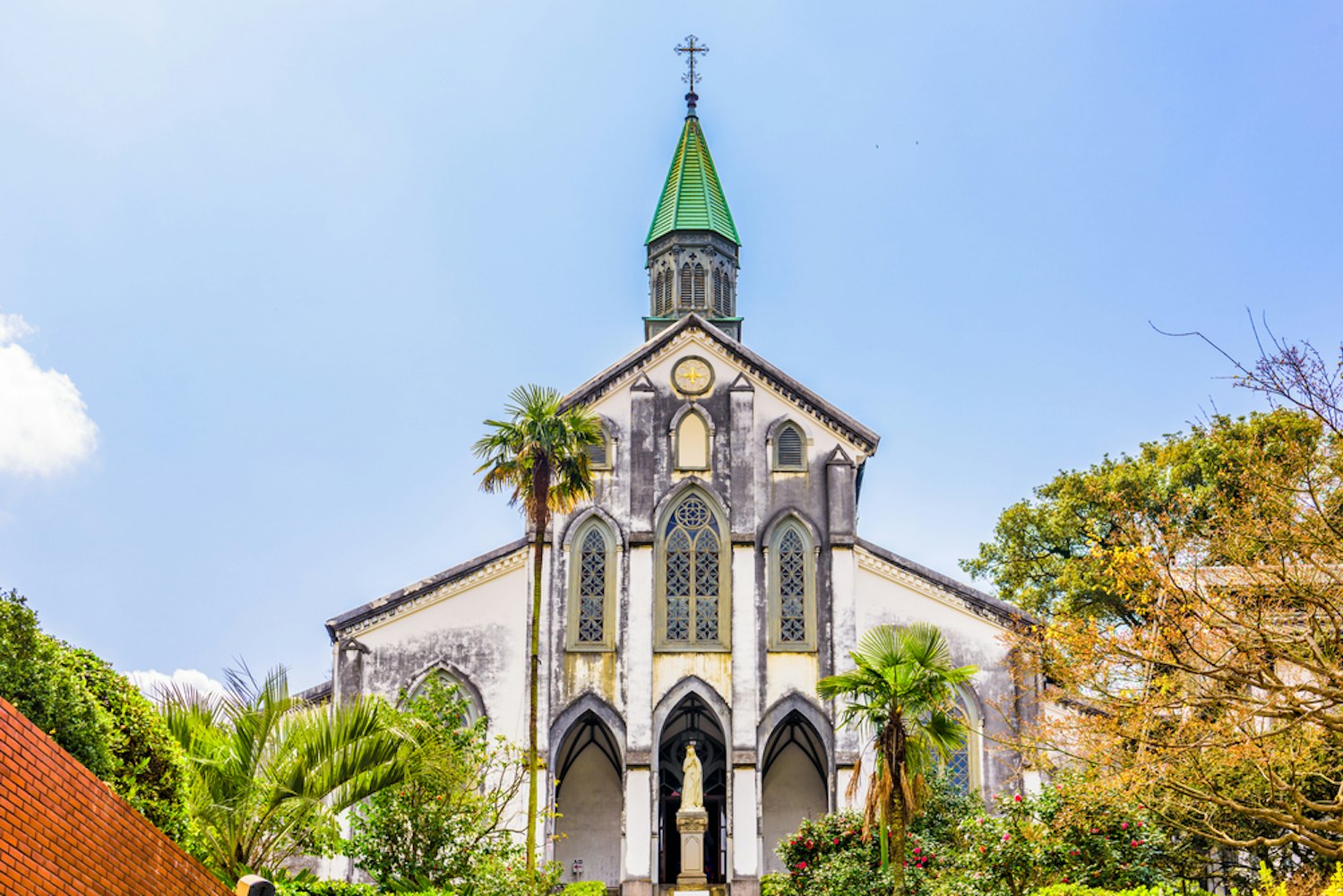
มหาวิหารโอระหรือที่รู้จักกันในชื่อโบสถ์คาทอลิกโอระเป็นโบสถ์ที่เก่าแก่ที่สุดของญี่ปุ่นสร้างขึ้นในปี 1864 โดยมิชชันนารีชาวฝรั่งเศส ได้รับการกําหนดให้เป็นสมบัติของชาติและเป็นอาคารสไตล์ตะวันตกแห่งแรกที่ได้รับสถานะนี้ในญี่ปุ่น
โบสถ์แห่งนี้รําลึกถึงผู้พลีชีพของคริสเตียน 26 คนที่ถูกประหารชีวิตในนางาซากิในปี 1597 มหาวิหารโอระตั้งอยู่ในอดีตนิคมต่างชาติของนางาซากิ เป็นสถานที่ทางประวัติศาสตร์และวัฒนธรรมที่สําคัญ เป็นสัญลักษณ์ของความยืดหยุ่นของคริสเตียนชาวญี่ปุ่นที่ซ่อนศรัทธาไว้ในช่วงที่มีการข่มเหง
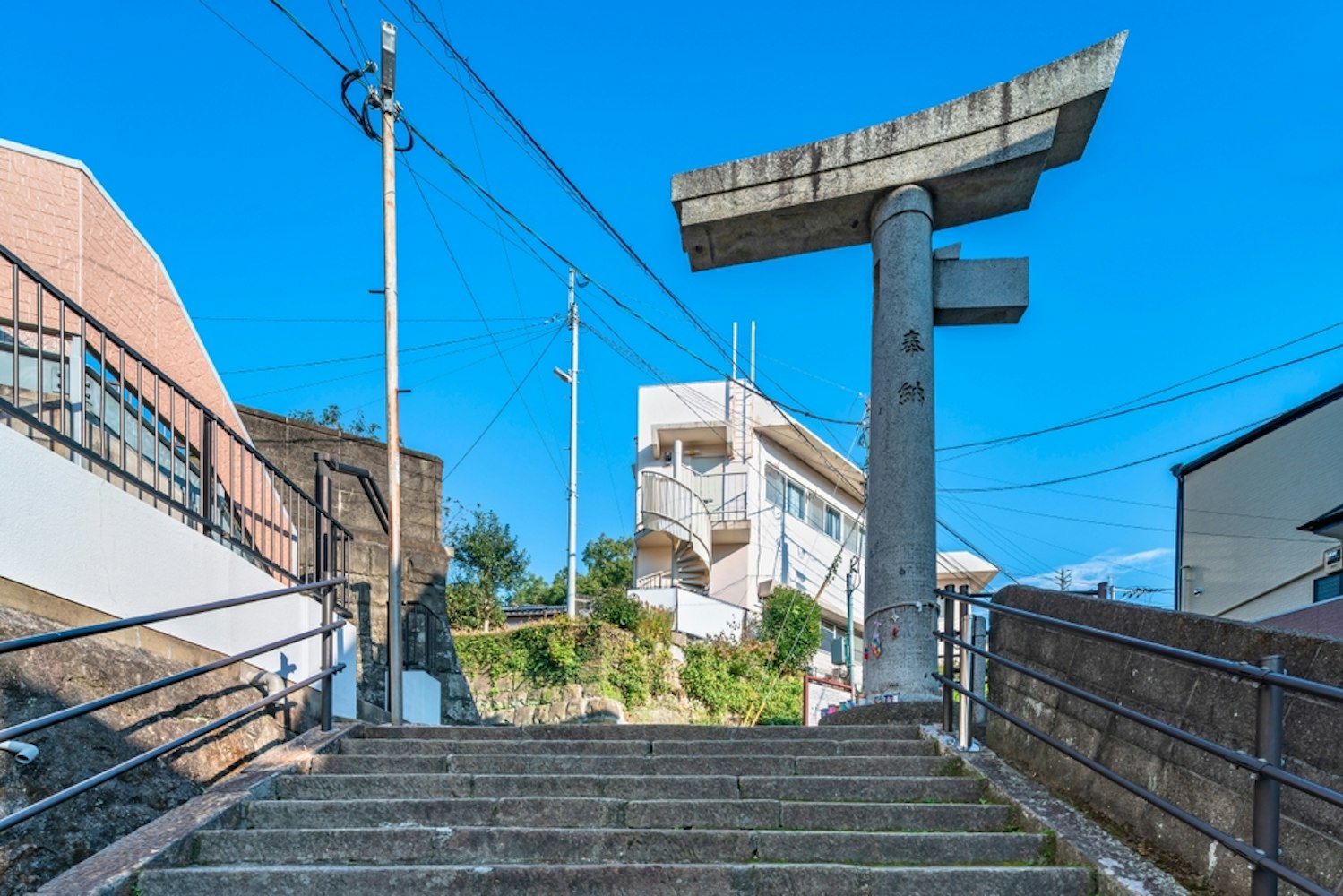
ศาลเจ้าซันโนะ มีความโดดเด่นในเรื่องประตูโทริอิที่รอดชีวิต ซึ่งยังคงยืนหยัดอยู่หลังจากการระเบิดของปรมาณู ประตูเป็นสัญลักษณ์ของความยืดหยุ่นและความหวัง
สถานที่แห่งนี้เป็นสถานที่พักผ่อนที่เงียบสงบและเชื่อมโยงกับประเพณีทางจิตวิญญาณของญี่ปุ่น
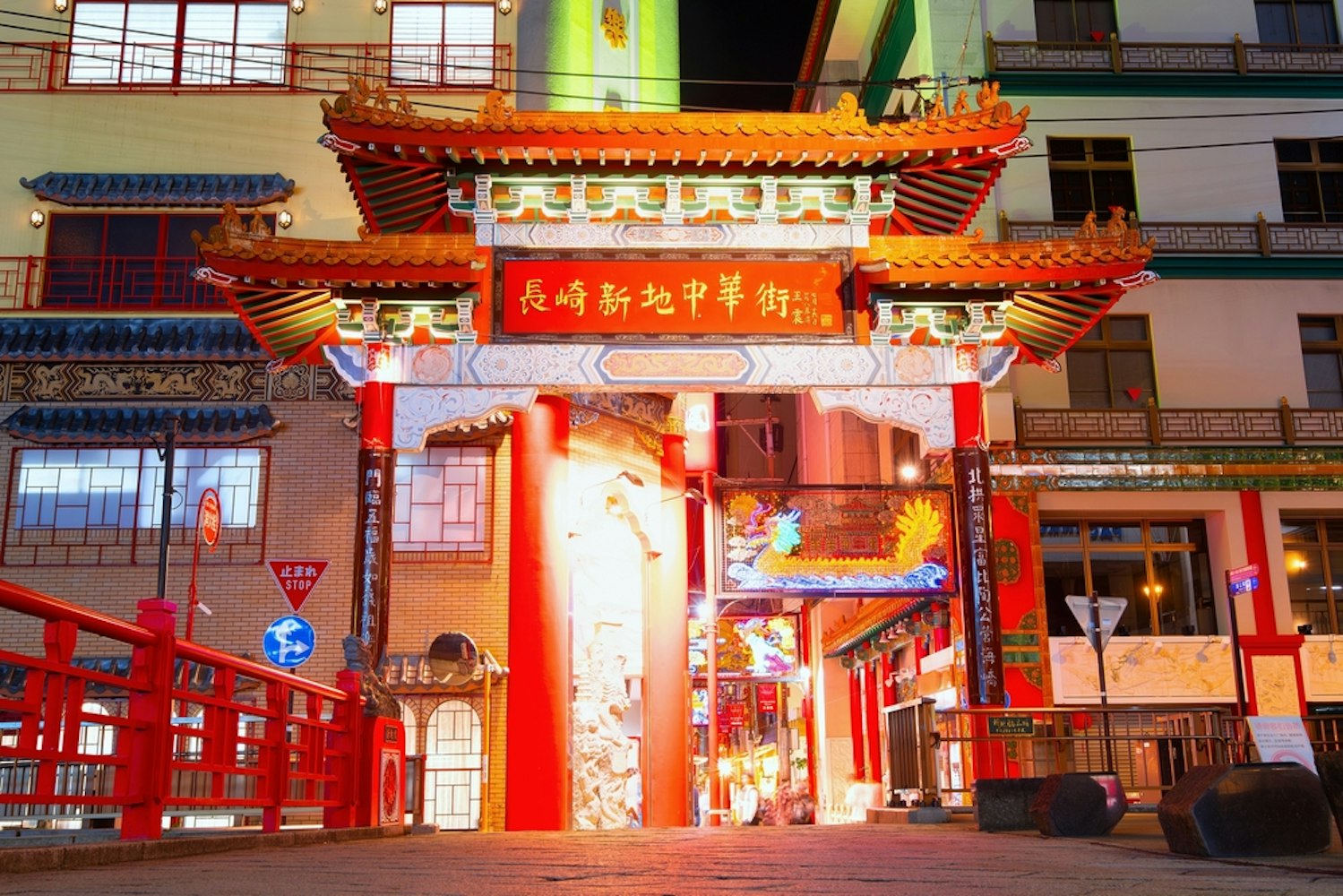
ไชน่าทาวน์ชินจิ ซึ่งเป็นย่านที่เก่าแก่ที่สุดในญี่ปุ่น มีผู้คนคึกคัก มีร้านค้า ร้านอาหาร และสถานที่ทางประวัติศาสตร์ที่มีชีวิตชีวา ย่านที่พลุกพล่านแห่งนี้ให้ทัศนียภาพที่ไม่เหมือนใครของพรมวัฒนธรรมอันยาวนานของนางาซากิ
ใช้ประโยชน์จากเทศกาลโคมไฟนางาซากิ ซึ่งเป็นงานประจําปีที่เมืองจะประดับประดาด้วยโคมไฟนับพันดวง เทศกาลนี้เฉลิมฉลองวันตรุษจีนและเพิ่มบรรยากาศมหัศจรรย์ให้กับเมือง
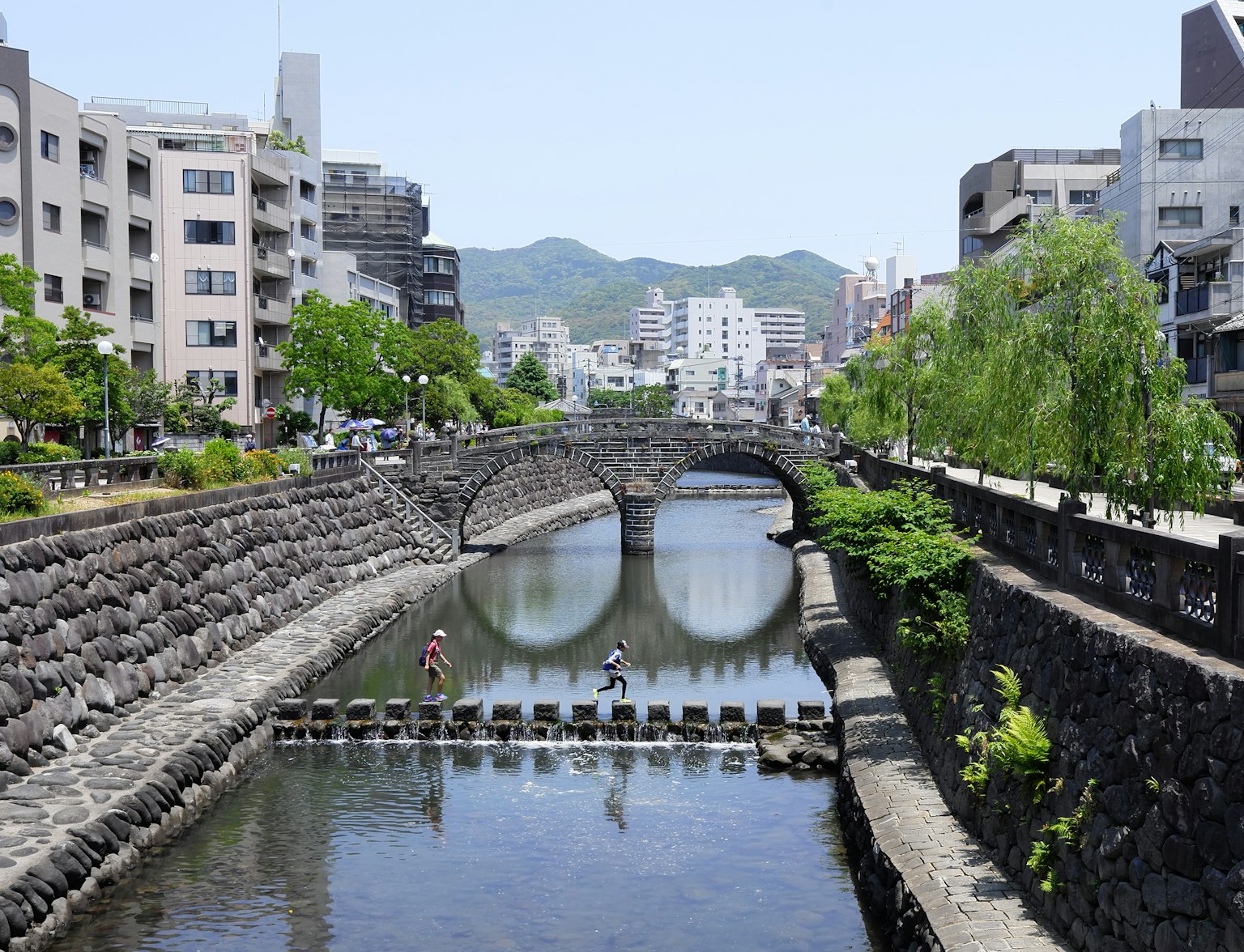
ค้นพบรสชาติอันเข้มข้นของนางาซากิในการผจญภัยด้านอาหารที่น่าตื่นเต้นนี้
อาหารรสเลิศของนางาซากิเป็นไฮไลท์สําหรับผู้มาเยือน ลองใช้ ซาร่า อุดรซึ่งเป็นเมนูก๋วยเตี๋ยวท้องถิ่นที่ราดด้วยอาหารทะเลและผัก
อีกอย่างหนึ่งที่ต้องลองคือ Castella Cake ซึ่งเป็นเค้กสปันจ์แสนอร่อยที่แนะนําโดยพ่อค้าชาวโปรตุเกส อาหารเหล่านี้นําเสนอรสชาติที่เป็นเอกลักษณ์ของวัฒนธรรมอาหารอันรุ่มรวยของนางาซากิ
วางแผนการเยี่ยมชมของคุณรอบ ๆ ไซต์สําคัญ: หากต้องการทําความเข้าใจความสําคัญทางประวัติศาสตร์ของเมือง ให้ไปที่พิพิธภัณฑ์ระเบิดปรมาณูนางาซากิ สวนสันติภาพ และสวนโกลเวอร์
สัมผัสเทศกาลท้องถิ่น: จัดเวลาการเดินทางของคุณให้ตรงกับเทศกาลโคมไฟนางาซากิหรือกิจกรรมท้องถิ่นอื่น ๆ เพื่อเพลิดเพลินกับวัฒนธรรมที่มีชีวิตชีวาของเมือง
ใช้ระบบขนส่งสาธารณะ: สถานีนางาซากิเป็นศูนย์กลางที่เดินทางไปยังสถานที่ท่องเที่ยวส่วนใหญ่ได้อย่างง่ายดาย ลองซื้อบัตรผ่านรายวันสําหรับรถรางเพื่อสํารวจเมืองอย่างสะดวก
สํารวจนอกเมือง: ขึ้นกระเช้าลอยฟ้าไปยังสวนอินาซายามะเพื่อชมทัศนียภาพอันงดงามของนางาซากิ หรือเยี่ยมชมสถานที่ใกล้เคียง เช่น Dutch Trading Post และภูเขาอินาสะที่งดงาม
เคารพประวัติศาสตร์: เมื่อเยี่ยมชมอนุสรณ์สถานและพิพิธภัณฑ์ที่เกี่ยวข้องกับการทิ้งระเบิดปรมาณู ให้รักษาท่าทางที่เคารพเพื่อเป็นเกียรติแก่เหยื่อและความสําคัญของสถานที่เหล่านี้
นางาซากิเป็นเมืองที่ประวัติศาสตร์ วัฒนธรรม และความทันสมัยผสมผสานกันอย่างลงตัว ตั้งแต่การเตือนความจําในอดีตที่พิพิธภัณฑ์ระเบิดปรมาณูนางาซากิและสวนสันติภาพ ไปจนถึงชีวิตที่มีชีวิตชีวาในไชน่าทาวน์และทิวทัศน์อันงดงามของ โกลเวอร์ การ์เดนไม่มีปัญหาการขาดแคลนสิ่งที่ต้องทําในนางาซากิ
ไม่ว่าคุณจะเจาะลึกประวัติศาสตร์อันยาวนานหรือเพลิดเพลินกับอาหารท้องถิ่นและเทศกาลต่างๆ นางาซากิจะมอบประสบการณ์การเดินทางที่ลึกซึ้งและสมบูรณ์ซึ่งผู้มาเยือนครั้งแรกทุกคนควรหวงแหน อย่าลืมเพิ่มนางาซากิในรายการท่องเที่ยวของคุณเพื่อการเดินทางที่ยากจะลืมเลือนผ่านกาลเวลาและวัฒนธรรม
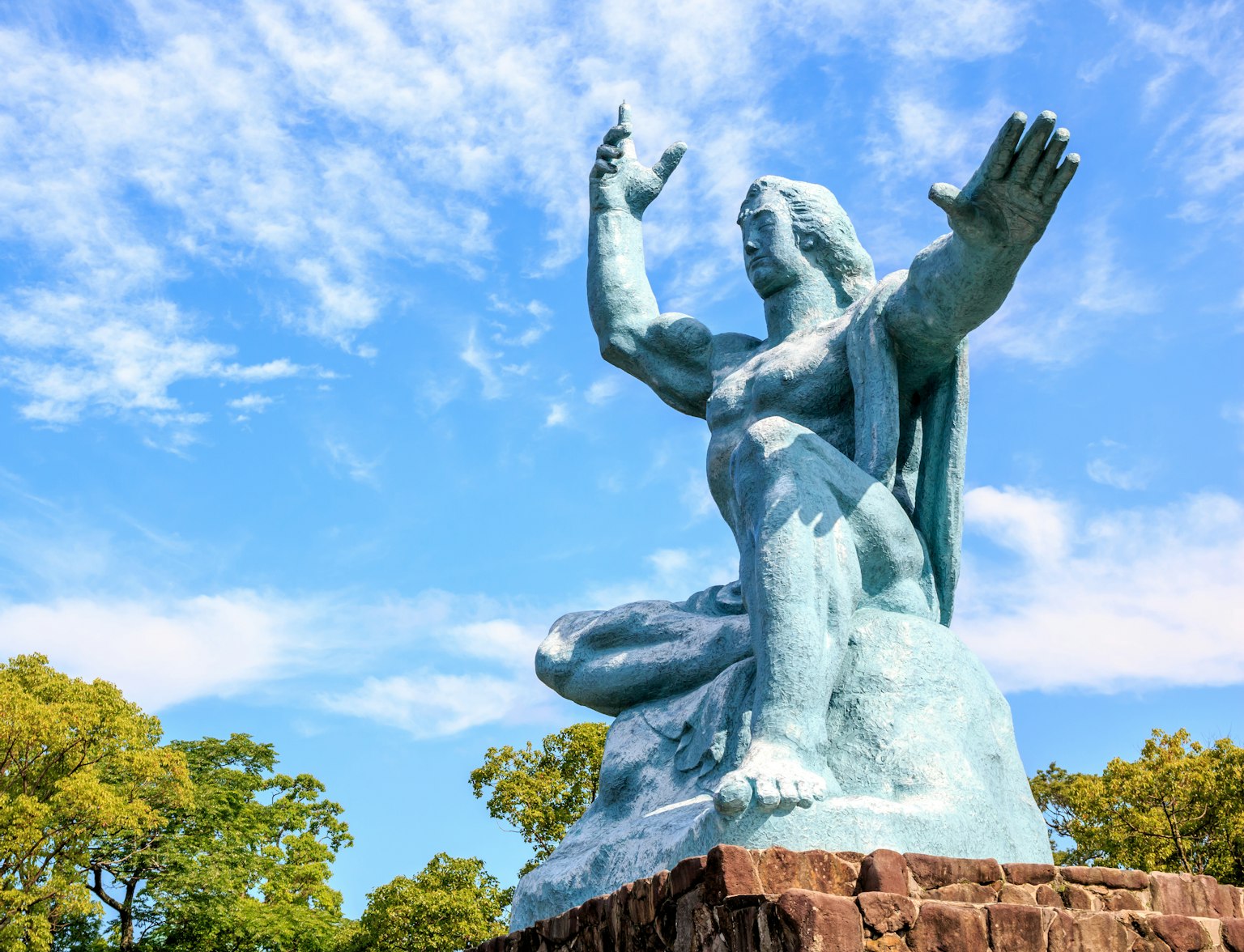
สํารวจนางาซากิอย่างที่ไม่เคยมีมาก่อนในทัวร์เดินเท้าส่วนตัวเต็มวันนี้
นางาซากิควรไปเยือนหรือไม่?
นางาซากิค่อนข้างห่างไกลจากเส้นทางที่นักท่องเที่ยวต่างชาติมาญี่ปุ่นเป็นครั้งแรก จึงเป็นสถานที่หลบหนีจากเส้นทางทองคําที่แออัดของโตเกียว เกียวโต และโอซาก้า
มีอะไรให้ทํามากมายในนางาซากิ?
นางาซากิมีกิจกรรมที่หลากหลาย ตั้งแต่การสํารวจสถานที่ที่เน้นสงครามโลกครั้งที่ 2 เช่น พิพิธภัณฑ์ระเบิดปรมาณูนางาซากิและสวนสันติภาพ ไปจนถึงการเยี่ยมชมวัดพุทธและศาลเจ้าชินโต ก่อนที่คุณจะออกเดินทางอย่าลืมสัมผัสกับทิวทัศน์ยามค่ําคืนอันน่าทึ่งของเมืองจากยอดเขาอินาสะ
เดือนไหนดีที่สุดที่จะไปเยือนนางาซากิ?
กรกฎาคมและสิงหาคมเป็นเดือนที่อบอุ่นที่สุดของปี สําหรับสภาพอากาศที่ดีที่สุด เดือนตุลาคมเป็นเวลาที่เหมาะสําหรับการเยี่ยมชม อย่างไรก็ตาม ฤดูร้อนเป็นที่นิยมมากที่สุด และมีแนวโน้มที่จะแออัดตั้งแต่เดือนมิถุนายนถึงสิงหาคม
ใช้เวลานานแค่ไหนใน นางาซากิ ?
นางาซากิมีสถานที่ท่องเที่ยวและสถานที่ท่องเที่ยวที่น่าประหลาดใจมากมาย ทําให้การใช้เวลาอย่างน้อยสองวันในการสํารวจเมืองนี้คุ้มค่า
วิธีการเดินทางใน เมืองนางาซากิ
รถราง:
Nagasaki Electric Tramway ให้บริการรถราง 4 สายทุกๆ 5-8 นาที ตั้งแต่ 6.00 น. ถึง 23.00 น. โดยสารครั้งเดียวมีค่าใช้จ่าย 120 เยน หรือคุณสามารถซื้อบัตรผ่าน 1 วันในราคา 500 เยนสําหรับการเดินทางได้ไม่จํากัด รถรางช่วยให้เดินทางไปยังสถานที่ท่องเที่ยวหลักส่วนใหญ่ของเมืองได้อย่างสะดวก รวมถึงใจกลางเมือง ซึ่งอยู่ห่างจากสถานีนางาซากิไปทางตะวันออกเฉียงใต้ประมาณ 1 กิโลเมตร เมื่อออกจากรถราง ให้จ่ายเงินให้คนขับทางประตูหน้า
เดินเท้า:
นางาซากิยังง่ายต่อการเดินเท้า ทําให้การสํารวจสถานที่ท่องเที่ยวและสถานที่ท่องเที่ยวมากมายของเมืองเป็นเรื่องง่าย



